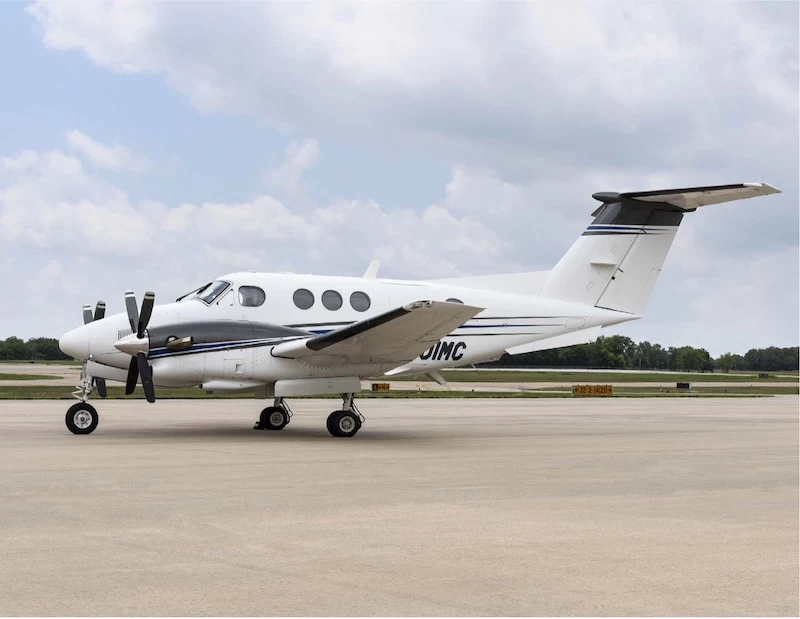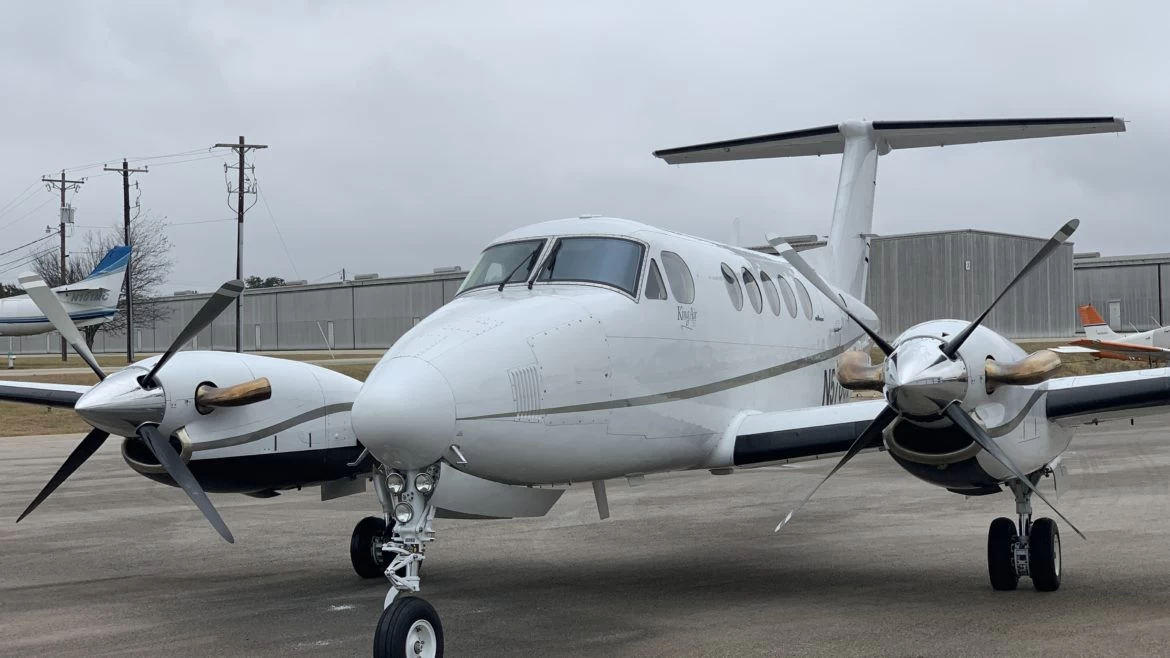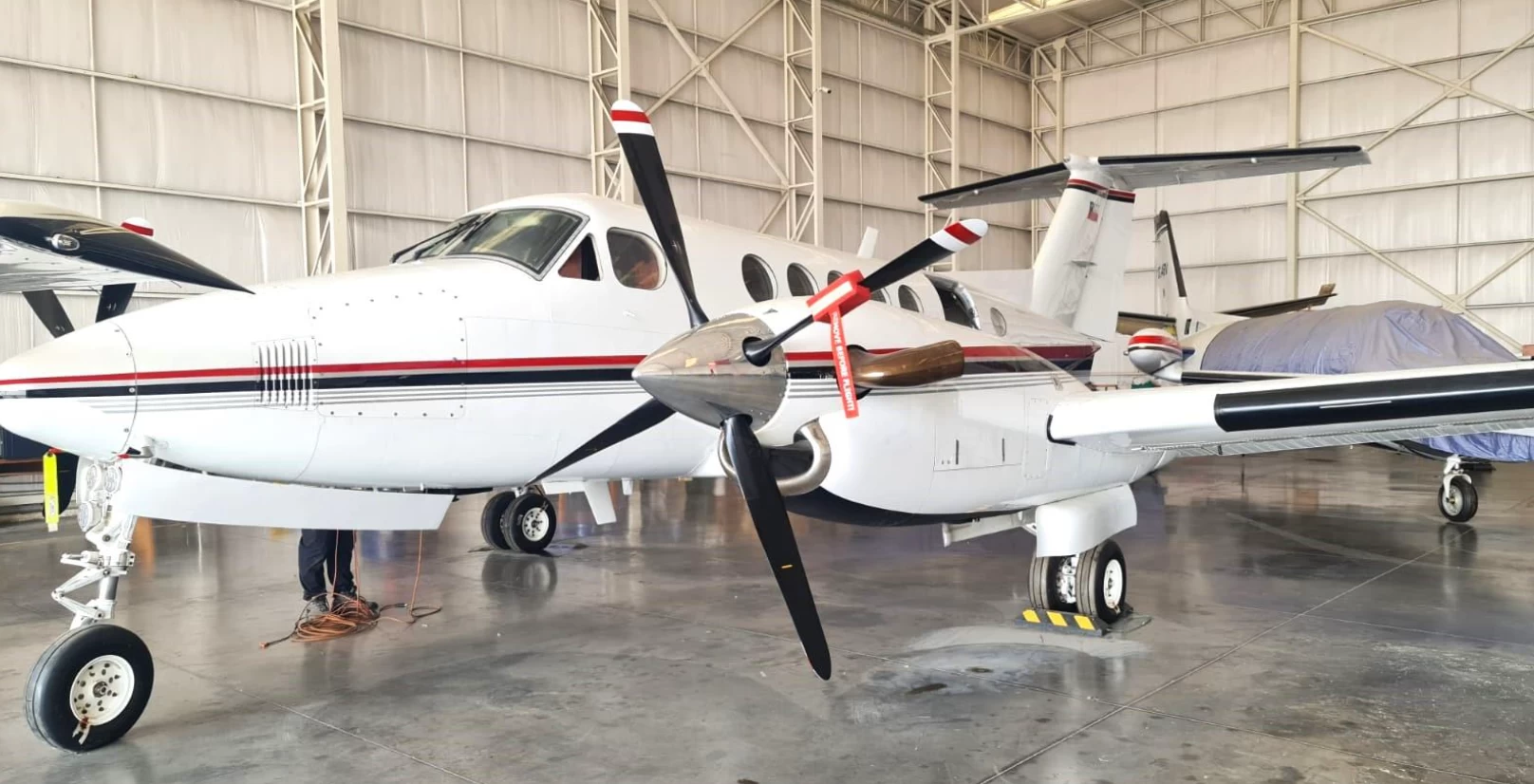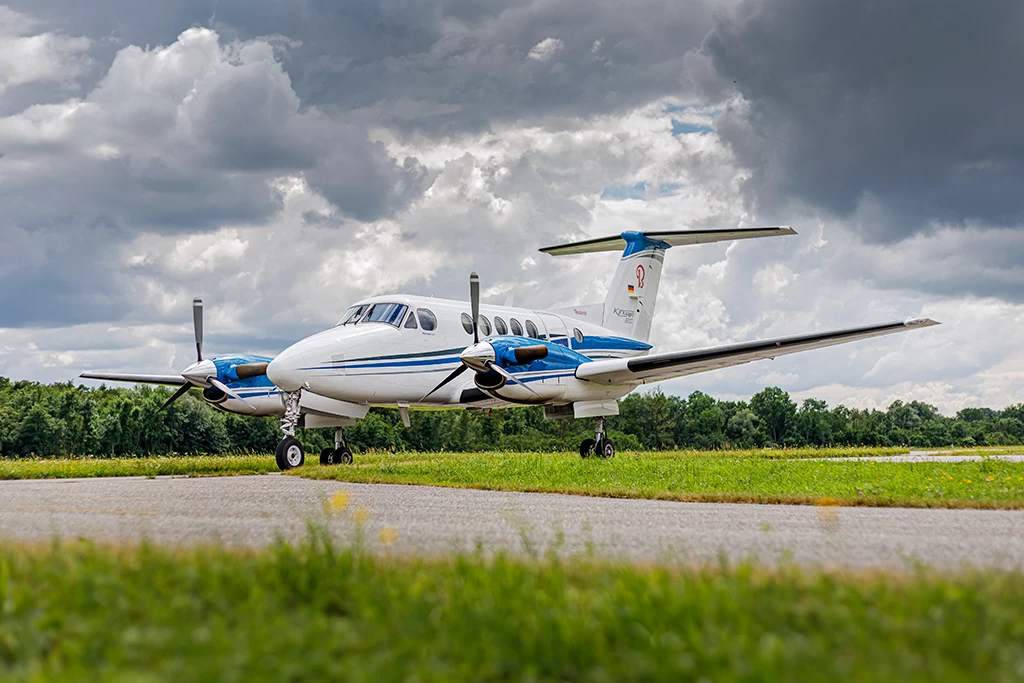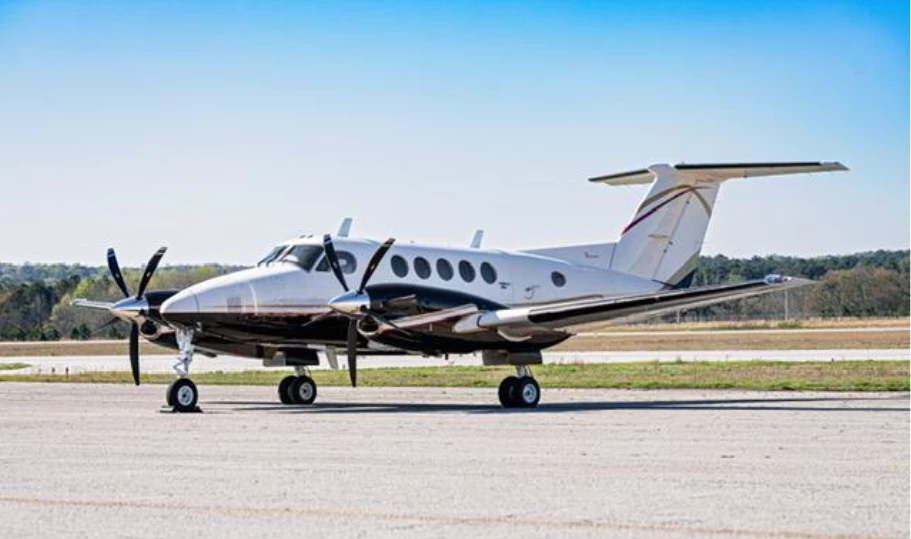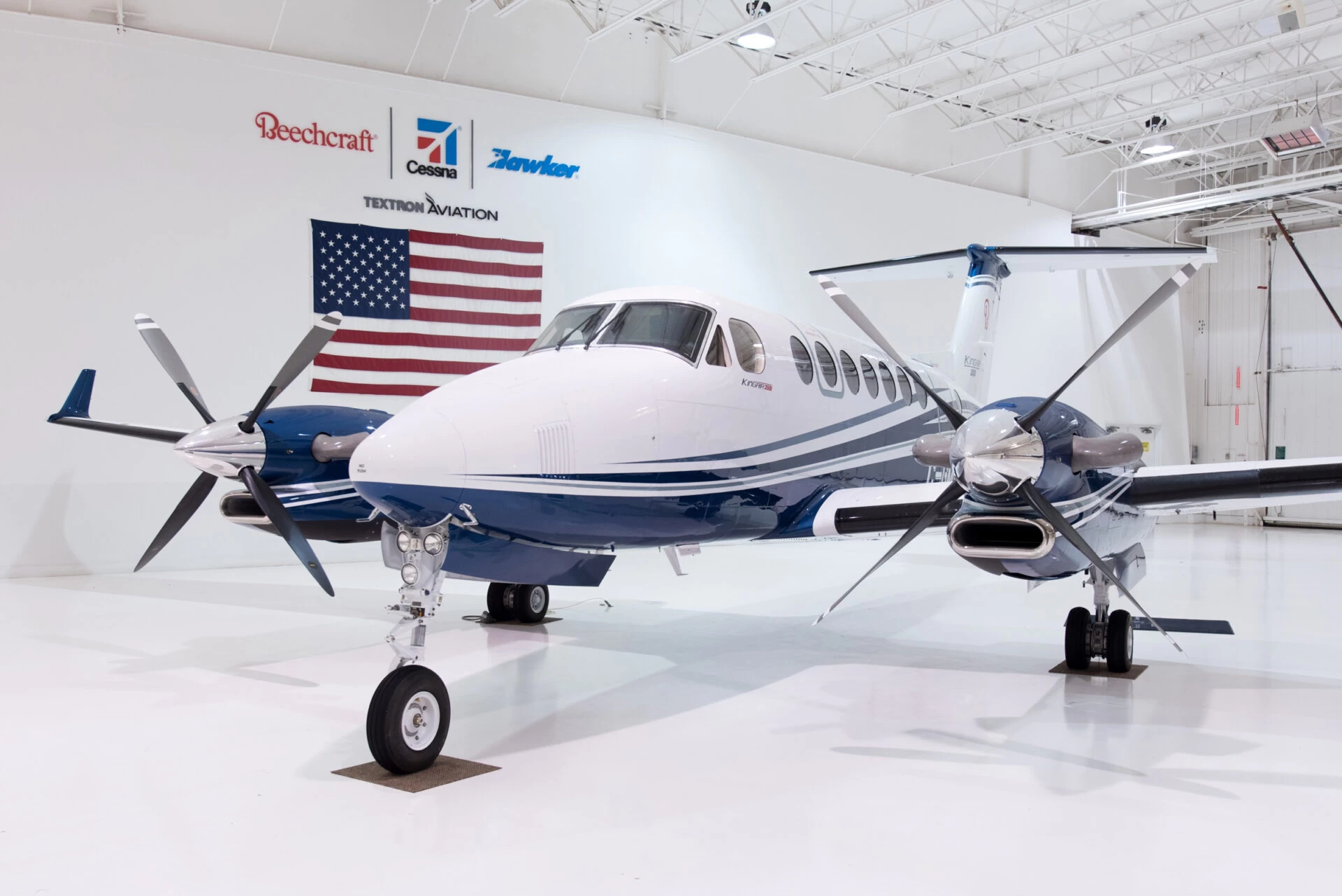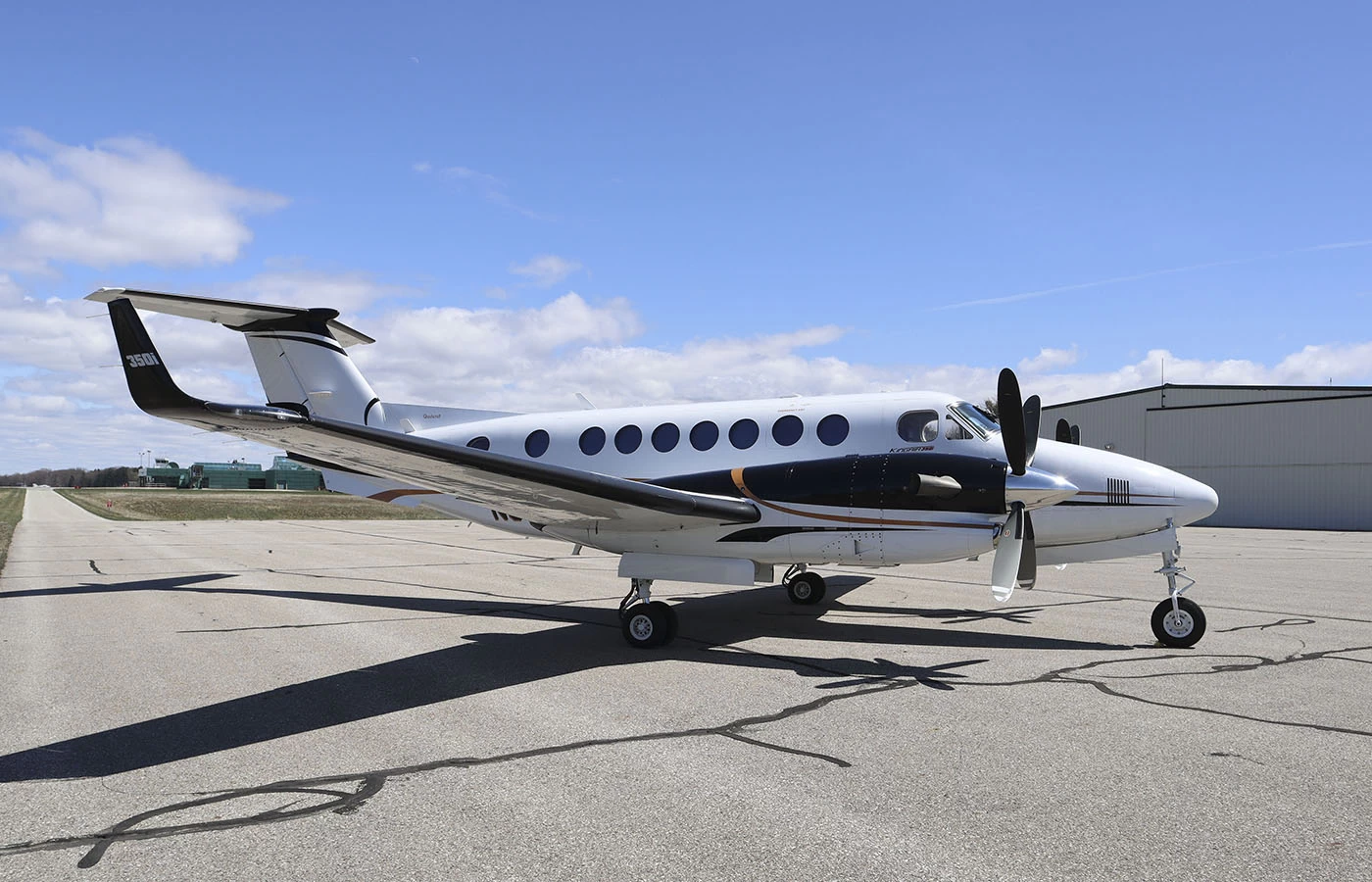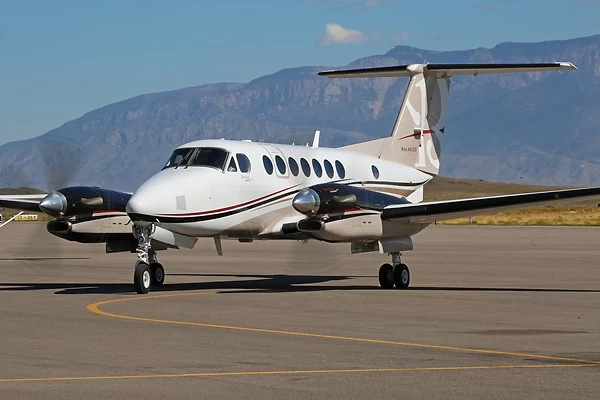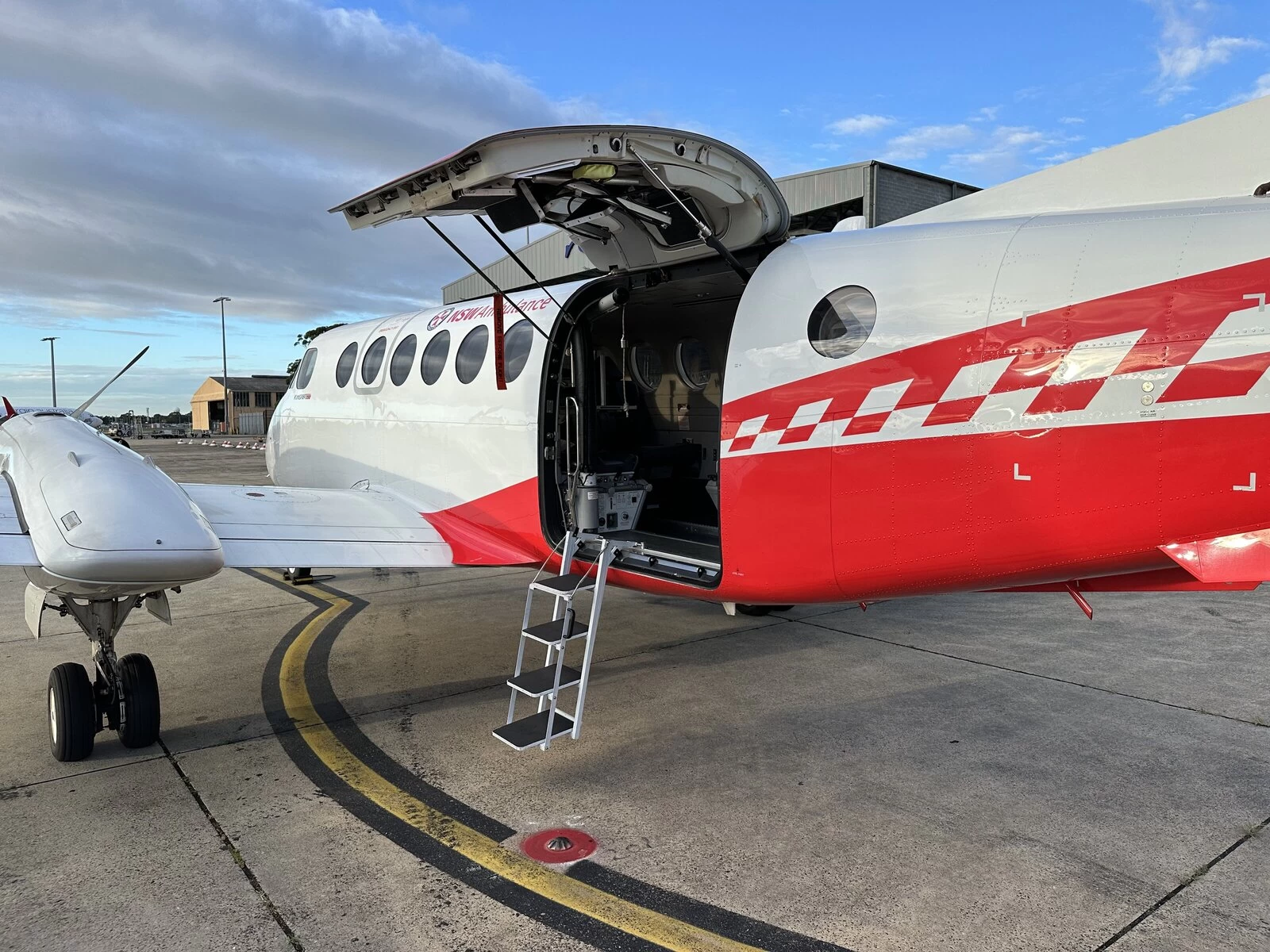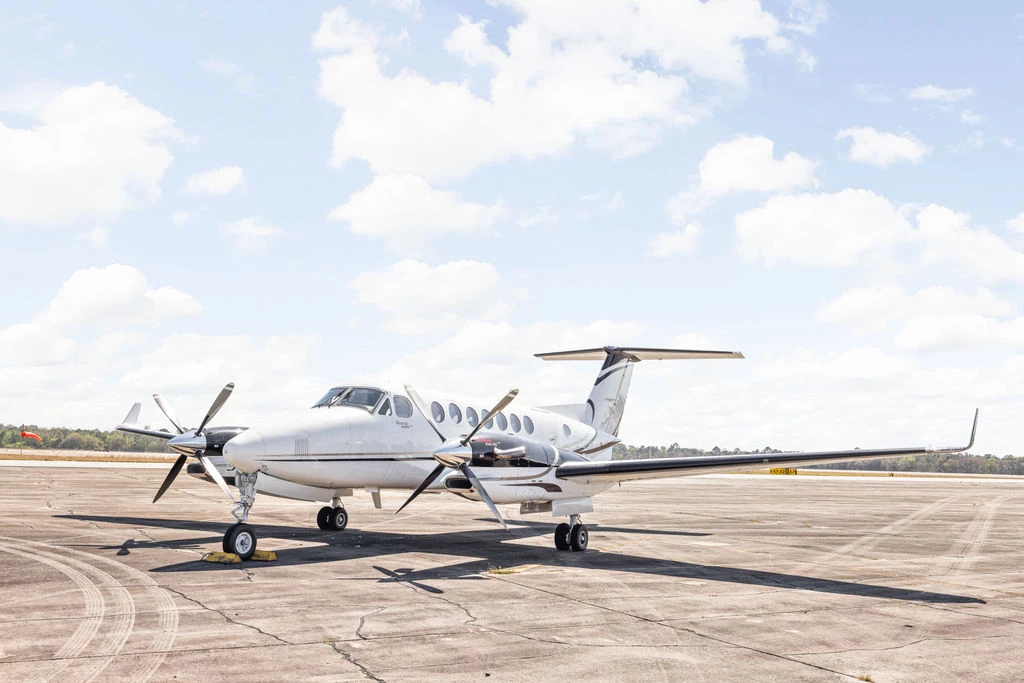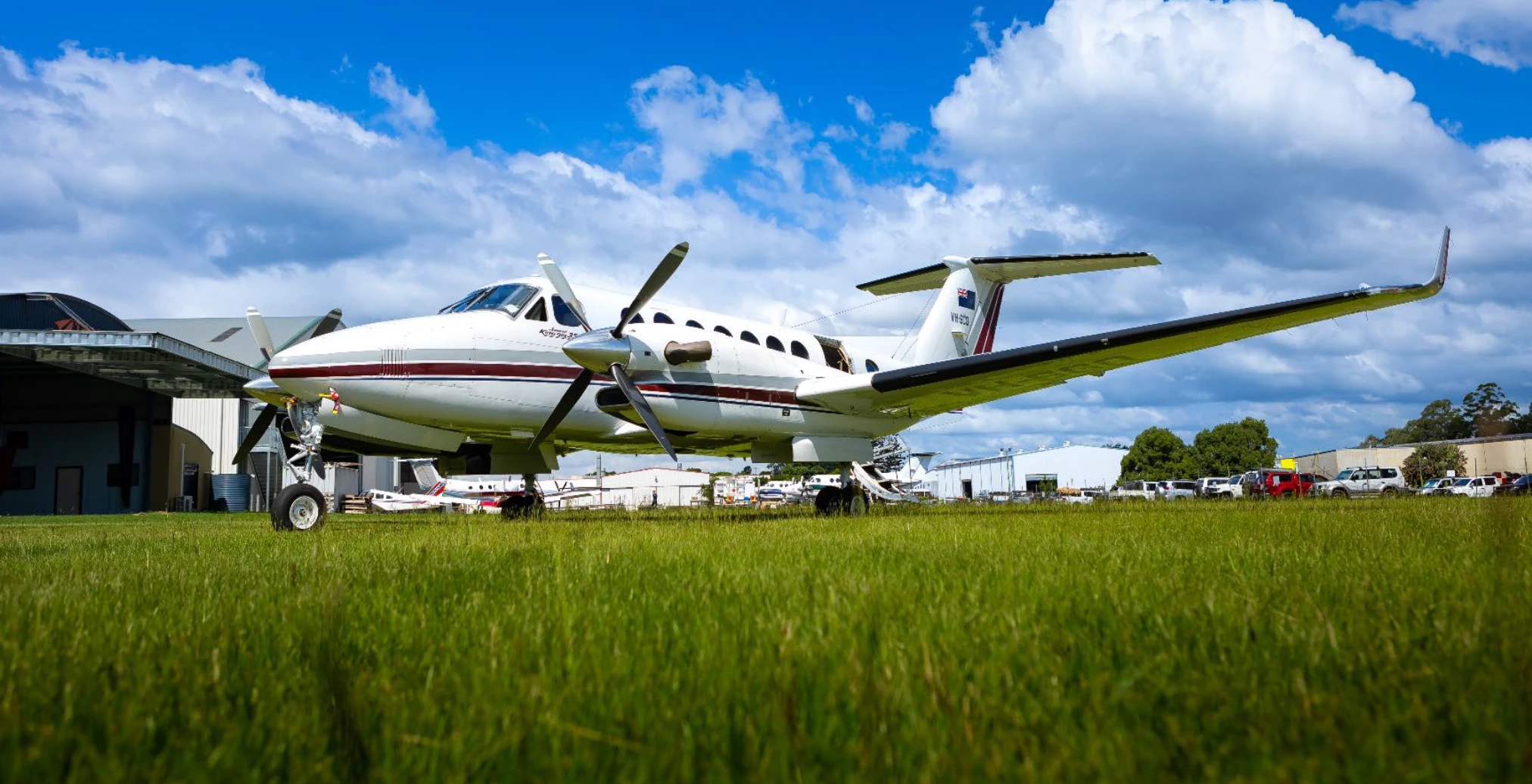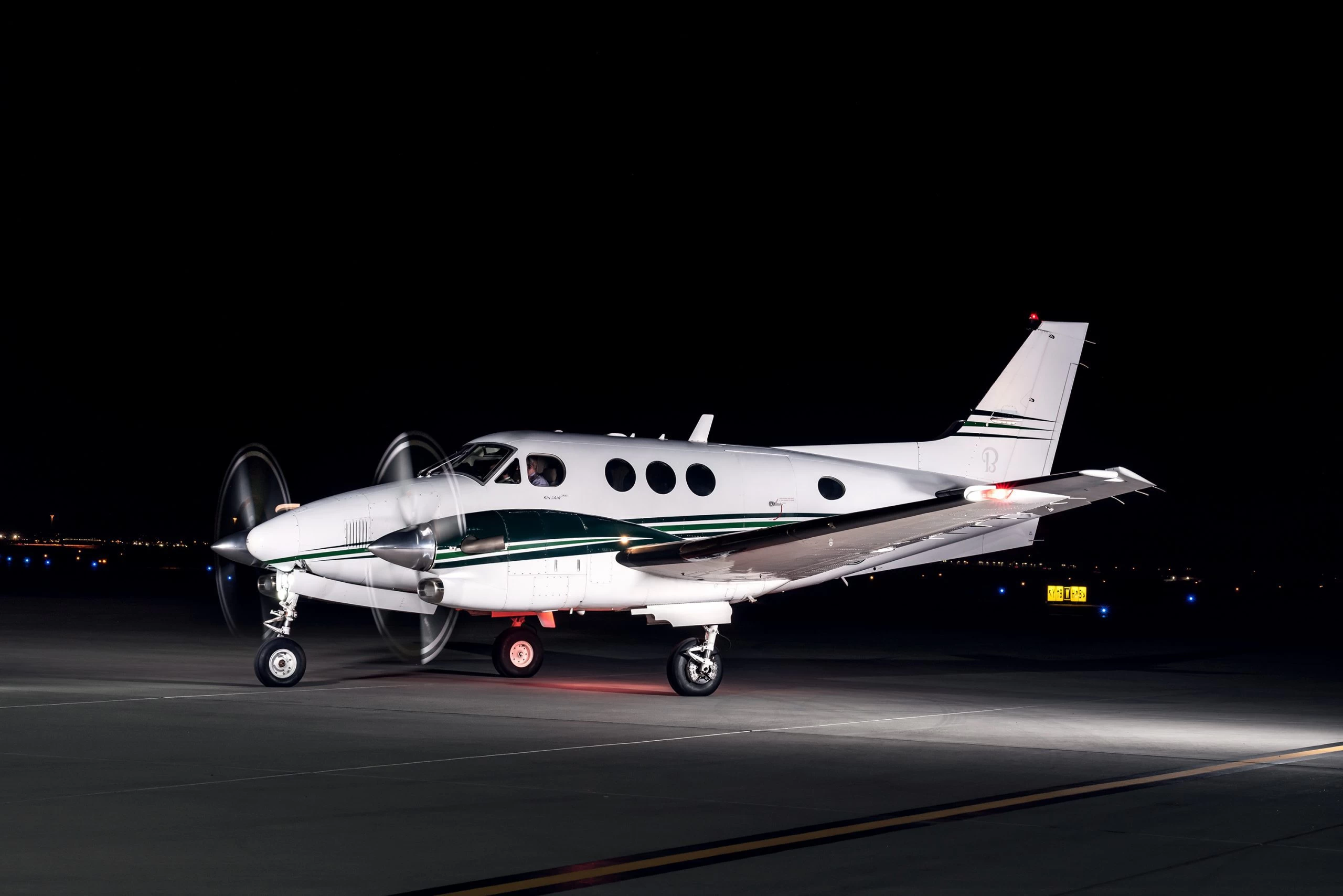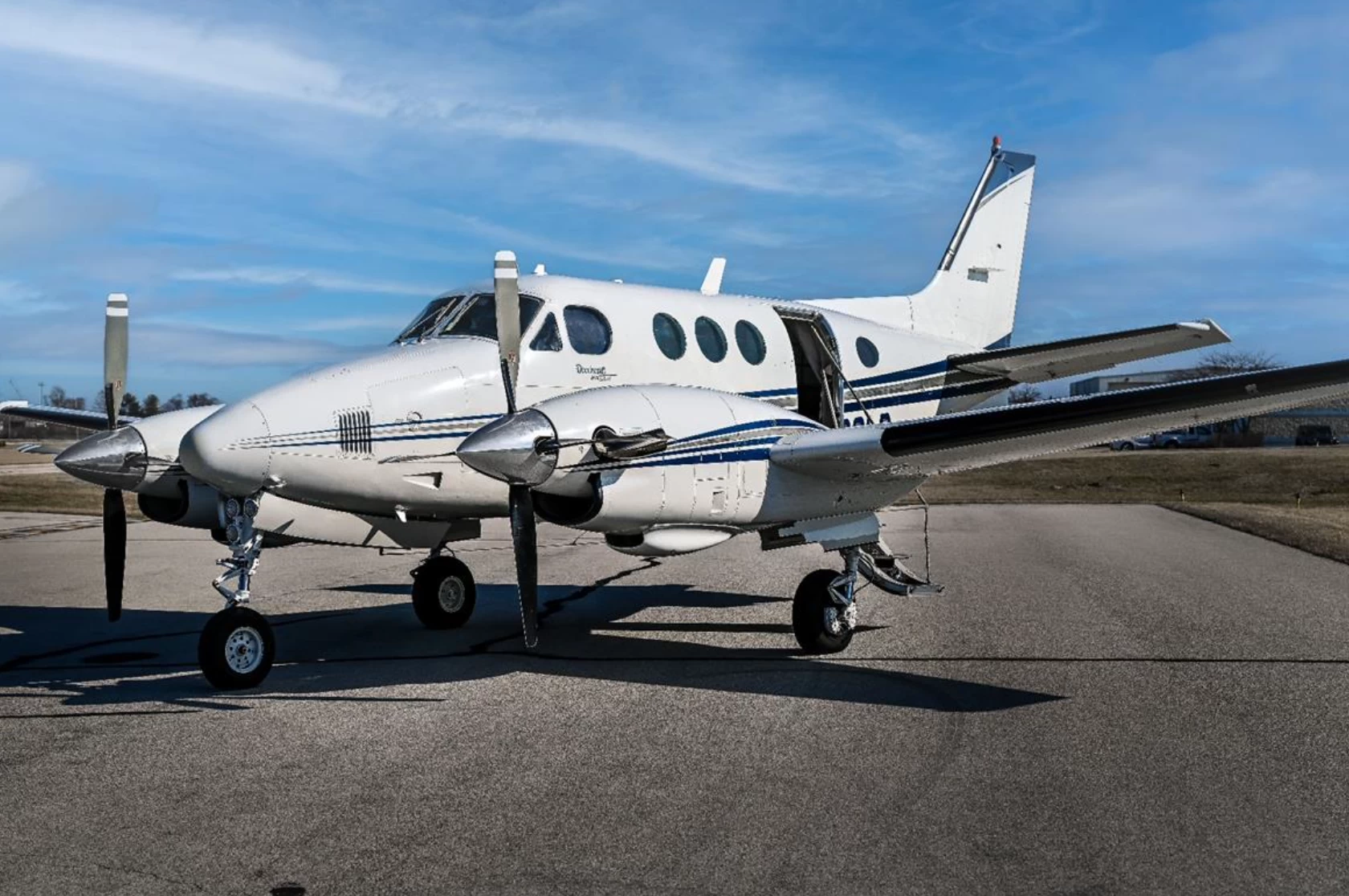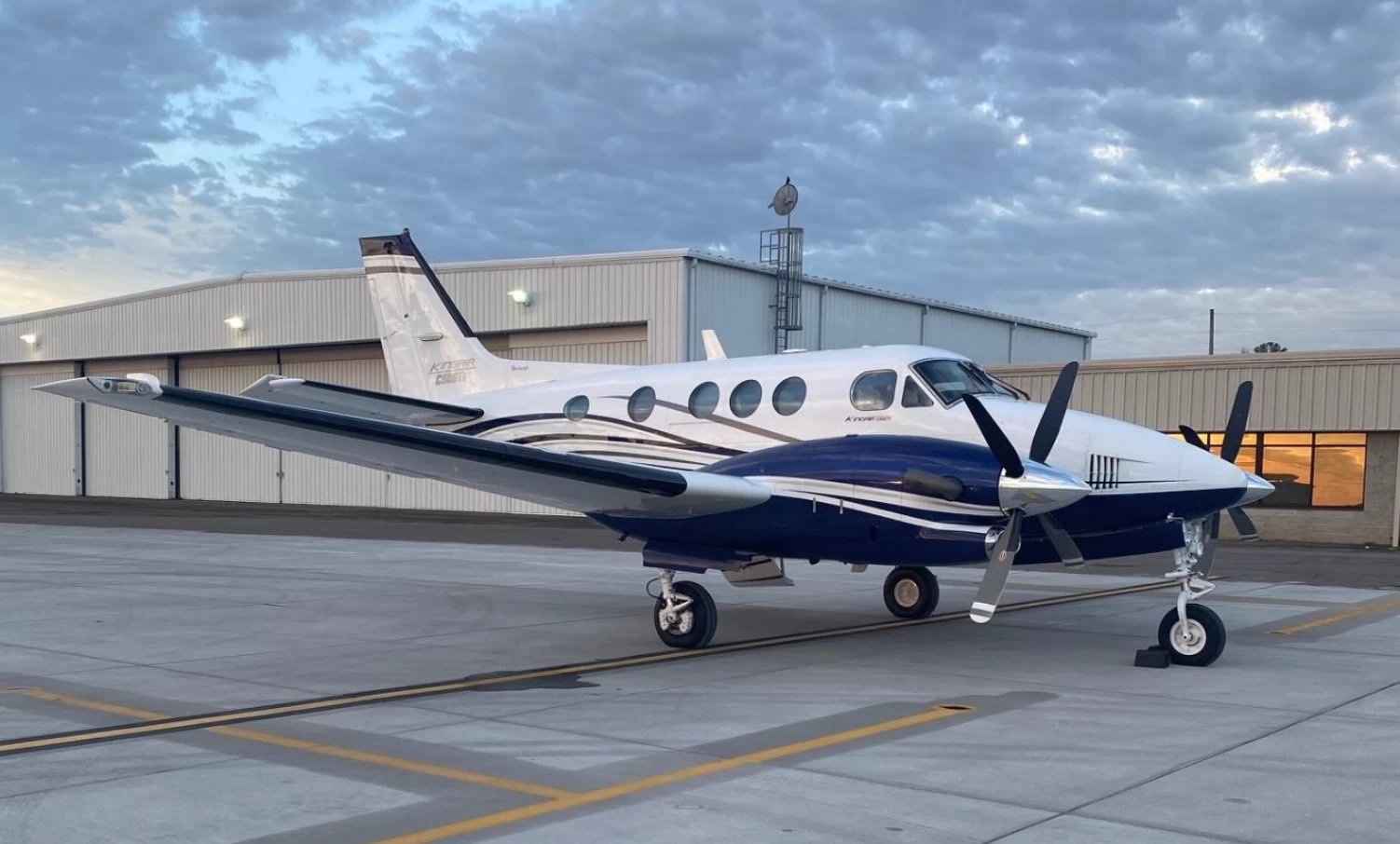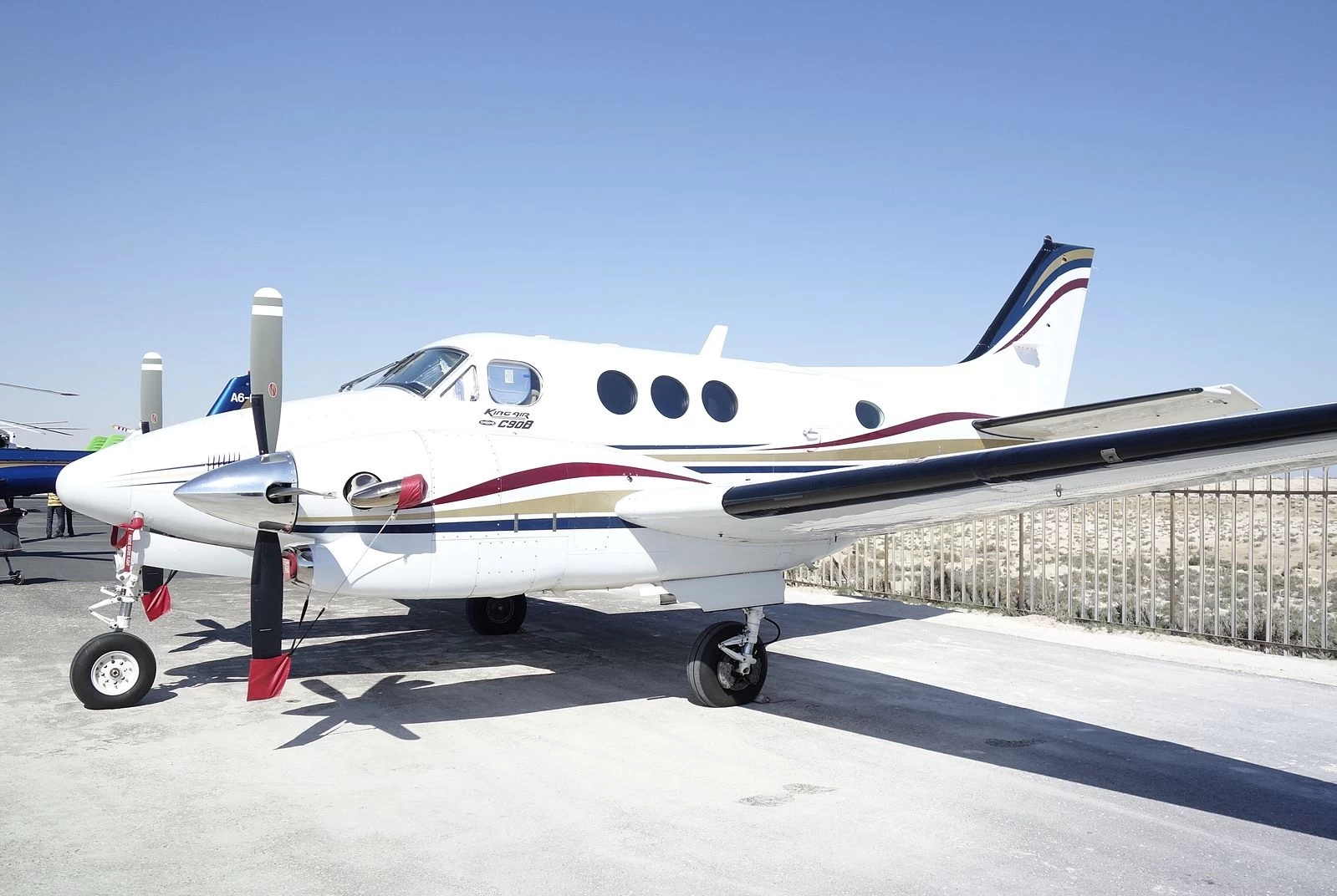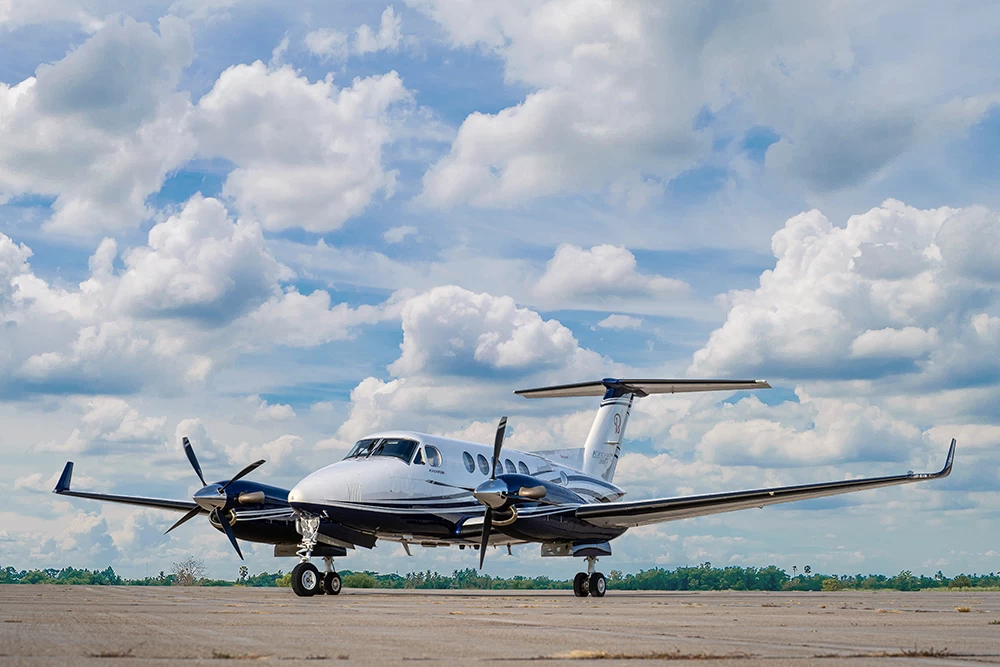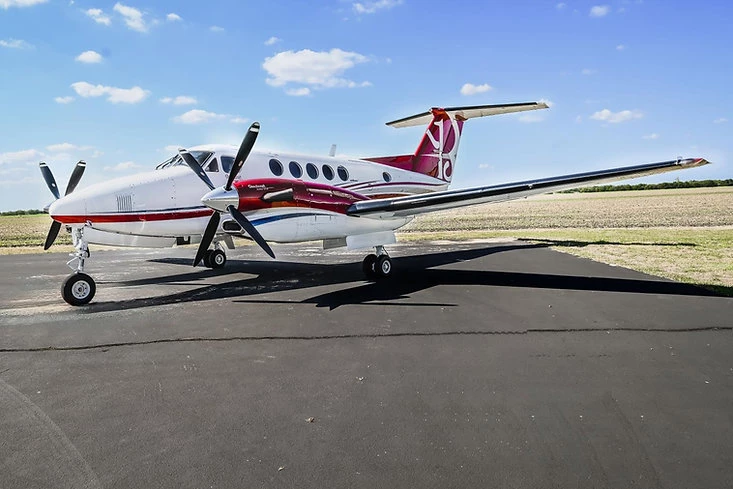1971’s King Air C90 was introduced as the third model in Beechcraft’s 90s range of turboprop business jets, coming after the A90, the B90 and their variants. The C90 was adapted from its predecessor, the B90, with improvements made to the pressurisation, a modified cabin and two PT6A-21 engines.
2006’s C90GT is similar in most aspects but has more power coming from the upgraded PT6A-135A engines. The C90GTi was announced in 2007; again virtually unchanged but now with the next generation of Collins Pro Line avionics.
AeroClassified has used King Air C90s for sale
THINKING OF BUYING A KING AIR C90? DISCOVER THE SPECS BELOW.The C90 stands at 35.5ft long and 14.3ft high, with a wingspan that has been increased from earlier models to 50.3ft.The C90GT and C90GTi have the same dimensions.
All three have typical cabin seating arranged for five to six passengers in a club style and all have a lavatory at the rear of the cabin and internal baggage space.
The C90 has a maximum cruise speed of 223ktas, which compares with the C90GT and the C90GTi’s 270ktas. All three jets have a certified ceiling of 30,000.
View all King Air C90s for sale here
Looking to sell a King Air C90 visit HERE?
Beechcraft King Air C90 turbo prop aircraft advertised for sale. Search the current King Air C90 listings to view the current aircraft C90 global market place.
The Model 90 King Air was conceived as the Model 120 in 1961. On May 15, 1963, Beechcraft began test flights of the proof-of-concept Model 87, a modified Queen Air with Pratt & Whitney Canada PT6A-6 engines. On July 14, Beech announced a new type, and a month later began accepting orders for the “King Air”, with deliveries to commence in Autumn 1964.[2] On January 24, 1964, the first definitive prototype, by now designated Model 65-90 and also fitted with PT6A-6 engines,[3] flew for the first time. After 10 months of test flying, in 1964 the Model 87 was delivered to the United States Army as the NU-8F. The first production aircraft was delivered on October 8, and by the end of the month, 152 aircraft had been ordered;[4] by year’s end, seven had been built.[5]
In 1966, after 112 65-90s were completed,[5] production switched to the Model 65-A90 with PT6A-20 engines. As a measure of the type’s popularity, 206 65-A90s were built in less than two years when production switched to the Model B90, the first of these rolling off the production line in 1968.[5] Military versions built during these years included the 65-A90-1, 65-A90-2, 65-A90-3, and 65-A90-4, all being unpressurised models based on the Model 87. These were produced for the US Army which designated them U-21s of various sub-models; many were fitted out for electronic battlefield surveillance. A total of 162 of these were built between 1967 and 1971.[6]
A total of 184 B90 models were produced before the Model C90 was introduced in 1971,[5] with wingspan increased over earlier models by 4 ft 11 in (1.50 m) to 50 ft 3 in (15.32 m), Maximum Take-Off Weight (MTOW) increased by 350 lb (160 kg) to 9,650 lb (4,378 kg), and PT6A-20A engines. The broadly similar Model E90 was introduced the following year, with PT6A-28 engines; the two were produced in parallel. Further refinement of the 90 series resulted in the Model F90 and follow-on Model F90-1. The F-models featured the T-tail of the Model 200 King Air mated to the fuselage and wings of the E90, with PT6A-135 engines of 750 shp (560 kW) driving four-bladed propellers. The F90 prototype flew on January 16, 1978 and 203 production versions followed between 1979 and 1983, when the F90 was superseded by the F90-1.[5] The F90 prototype was re-engined with Garrett AiResearch TPE-331 engines to test the feasibility of a Model G90, but this model was not put into production.

